Debate on “The New European Bauhaus and its territorial dimension” high-level event with Ms Mariya Gabriel, European Commissioner for Innovation, Research, Culture, Education and Youth and Ms Elisa Ferreira, European Commissioner for Cohesion and Reforms. 14 April 2021
Blossomscapes, Japanese Gardens, Ballinlough, April 2021
Kieran’s Our City, Our Town, 15 April 2021
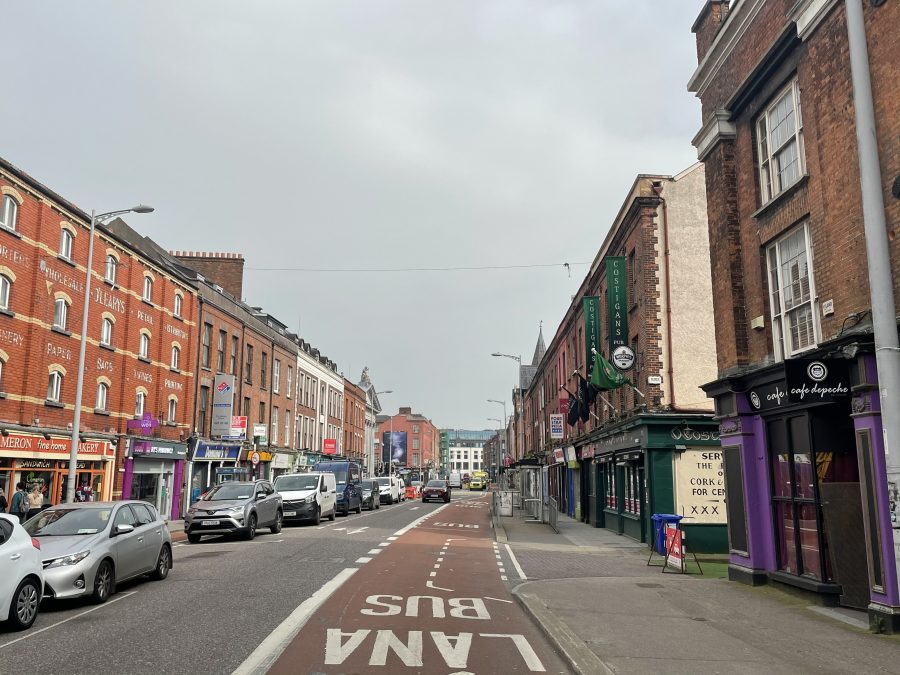
Kieran’s Our City, Our Town Article,
Cork Independent, 15 April 2021
Journeys to a Truce: The Washington Street Ambush
Patrick Murray was Officer in Command of C-Company of the 1st Battalion, Cork No.1 IRA Brigade. In his witness statement for the Bureau of Military History (WS1584), he describes the Spring activity of an active IRA service unit in the city centre.
Patrick outlines that when the active service unit began, it comprised six members from each of the two battalions in the city. The men on the unit were: Danny Healy, Stephen McSwiney, Jim Barrett, Liam O’Callaghan, Seán Twomey and Patrick Murray from the 1st Battalion; and Florrie O’Donoghue, Jim Counihan, Ned Fitzgibbon, George Burke, Jim Fitzgerald, Peter Donovan and one other from the 2nd Battalion. Seán Twomey was put in charge.
There was a special space/ office in the city dealing with the unit’s intelligence and communications. This office was under the control of George Buckley. Only two or three selected couriers were allowed to know where the office was, for fear of anyone being followed into it.
Of the first few weeks that the active service unit was in existence, Patrick notes: “We were actively engaged watching the movements of military and police. The members of the active service unit took turns in taking up positions along routes which were supposed to be taken by the police and military, but as they did not take any particular route with any regularity, it was often found that they would leave a street just when the military or police came into it”.
The unit’s first ambush occurred on 12 April 1921, just after 10am, when bombs were thrown into a lorry in Washington Street at the junction with Little Anne Street. The bombs failed to explode, and the military returned the fire wounding some civilians. The failure of bombs to explode became a serious problem in the city, as it was realised that, if a bomb did not go off, civilians and the Volunteers themselves would suffer heavy casualties through the retaliation of gunfire. Special men connected with the unit were allocated to the work of inspecting all bombs which were to be used in the city.
Michael O’Donoghue, engineer officer with the 2nd Battalion in his witness statement (WS1741) notes that he was present at the Washington Street ambush describes in his witness statement: “My three companions and myself were armed with revolvers. Our instructions were simple – to cover the retreat of a bombing party who were waiting to attack a military patrolling tender, which passed that way fairly regularly in the morning”.
After the ambush, Michael recalls looking east towards Broad Lane church or the then St Francis Church. “I saw one of our bombers limping along slowly and heavily holding his right side and half supported, half dragged along by a companion. Then, as if from nowhere, a side-car appeared and from it jumped down another of the attacking party. The wounded man is then helped up to a seat on the car, his companion sitting beside him and holding him. The jarvey sat on the opposite side with the other Volunteer behind him. The driver whips up his horse and off they trot in the direction of the Mercy Hospital”.
An official and stark proclamation was published in the Cork Examiner announcing that the competent military authority (Major General Strickland) had ordered the destruction of two large resident business premises near the Courthouse because they had been places where as the announcement noted “rebels and other evilly-disposed persons had consorted to levy war against His Majesty, King George V”.
Michael describes that one of the premises was Macari’s Café, a great resort of College students, where ice cream, minerals, fish and chips, peas and various other choice delicacies in fruit, fish and flesh. Macari himself, his wife and teen-age family were Italians who had settled in Cork pre 1914. It was a popular place for Cork youths especially students of all types, and IRA men were in and out casually every day and at, all times. The British wanted to punish Macari for not reporting to them the “comings and goings” of his clientele.
The other house officially condemned to destruction was Murphy’s public house and provision store round the corner of Messrs Dwyer’s stores near Clarke’s Bridge. The Murphys were a prominent Republican family from the Kinsale area of West Cork.
Michael outlines that the British military cordoned off Washington Street between the Courthouse and Wood Street. Macari’s and Murphy’s were entered by armed soldiers who ordered the occupants outside. Macari’s was blown up first. A demolition squad in khaki entered and set some explosives apparently on top floor. They withdrew to the street where they took cover at a safe distance. There then was a series of explosions and the roof was blown out, sending showers of slates and pieces of wood and masonry flying into the air. When the shower of smoke and dust had subsided the demolition squad again entered this time to complete the job by laying explosive charges on the ground floor.
Michael continues his detail: “Out again with them and back to the safety of the cordon. This time three or four tremendous explosions rocked the interior, completely wrecking everything within. Then the military repeated this programme of destruction in like mariner at Murphy’s. Not a solitary item of furniture or goods were permitted to be taken from either house and both buildings were utterly and completely wrecked in this brutal official reprisal”.
Have a story of relative to tell involved with the War of Independence in Cork, get in touch with Kieran at mccarthy_kieran@yahoo.com
Captions:
1095a. Present day site of Washington Street ambush (12 April 1921) at the intersection with Little Anne Street, (picture: Kieran McCarthy).
1095a. Present day site of Washington Street ambush (12 April 1921) at the intersection with Little Anne Street, (picture: Kieran McCarthy).
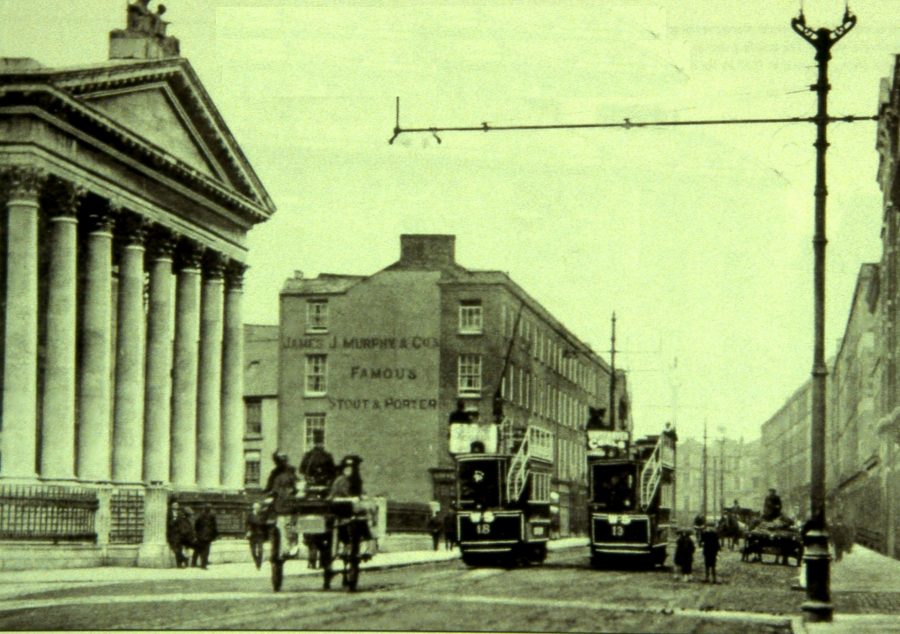
Cllr McCarthy, Councillors vote to rename city street to honour Cork family,
12 April 2021, “Speaking at the full council meeting, Independent councillor and historian Kieran McCarthy said it would be important that the public is informed about this distinction; ‘I would like that the paperwork that’s sent out to the public on this once it’s sanctioned here this evening will allude to the fact that this is about the MacSwiney family and not just the individual’, Councillors vote to rename city street to honour Cork family,
Councillors vote to rename city street to honour Cork family (echolive.ie)
Ward Watch – Proposed Aldi Store on Skehard Road, 12 April 2021
Attached are the maps and photomontages and the link to the planning file.
The planning number is 21/40052 and for the public to share formal concerns it’s e20 with your letter (with the planning number on it), and address the letter to the planning department, City Hall.
VIEW: iDocs Web (corkcity.ie)
I have lots of serious concerns about this development.
I will be submitting the comments below in a formal objection to the City Council’s Planning Director during this week coming;
– What is being proposed is a neighbourhood centre – not a local shop – but a large scale retail development but the site is not zoned for that in the current Cork City Council development plan.
– The design and excessive height of the development is out of character with the existing buildings in the area.
– The proposal creates a very dangerous traffic junction just metres from a critical road juncture of Church Road with Skehard Road. – The proposed development would have undue and unacceptable impacts on neighbouring properties due to overshadowing.- The site needs to be developed in an appropriate and sustainable manner – what is being proposed is the complete opposite of that.
– The proposed development is aesthetically out of character with the area. Its design is very poor
– in particular the brick buildings proposed facing onto the road. The development offers nothing to the overall environment of the immediate and surrounding neighbourhood.- There are two Aldi’s already within the area – one just metres from the development and another one opening in Douglas Village, just over a mile from the site. This is overkill.
– No consultation has taken place with local residents, and it has come as a surprise to them to see such a large scale proposal and their voices not asked on the proposal.
– Overall, the proposal makes a very negative contribution to the streetscape.
http://planning.corkcity.ie/idocsWebDpss/listFiles.aspx…
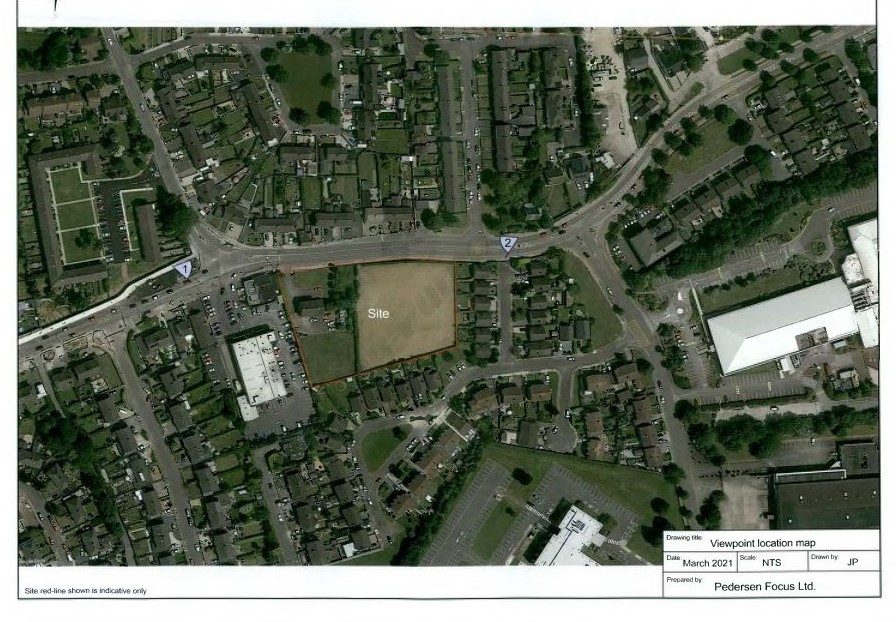
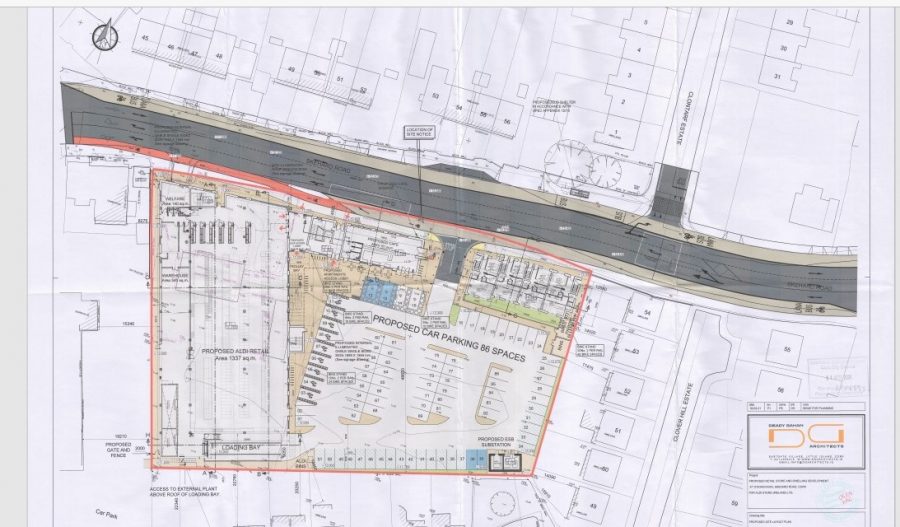
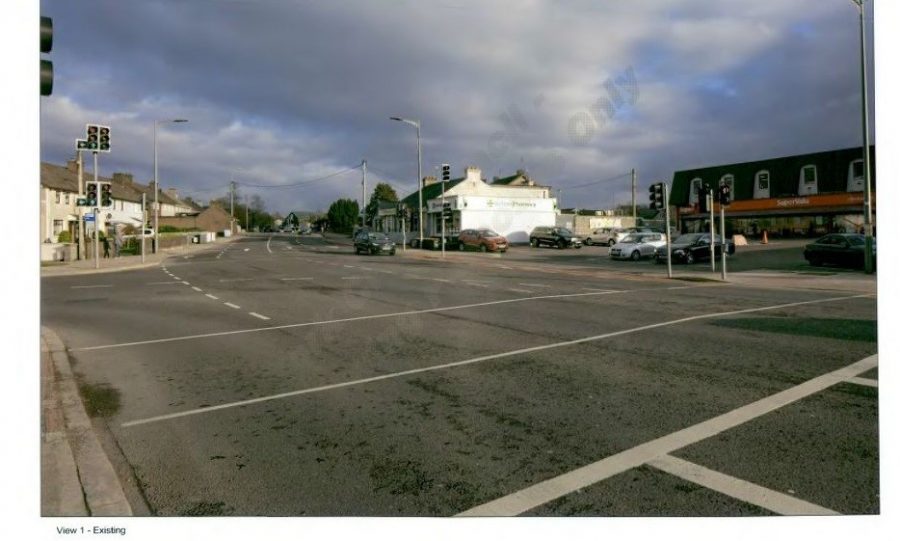
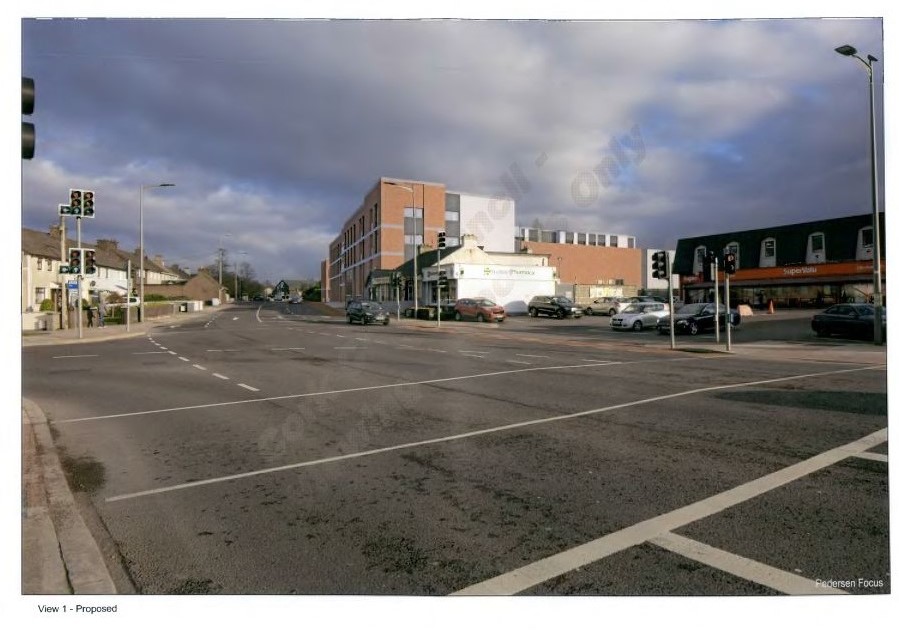
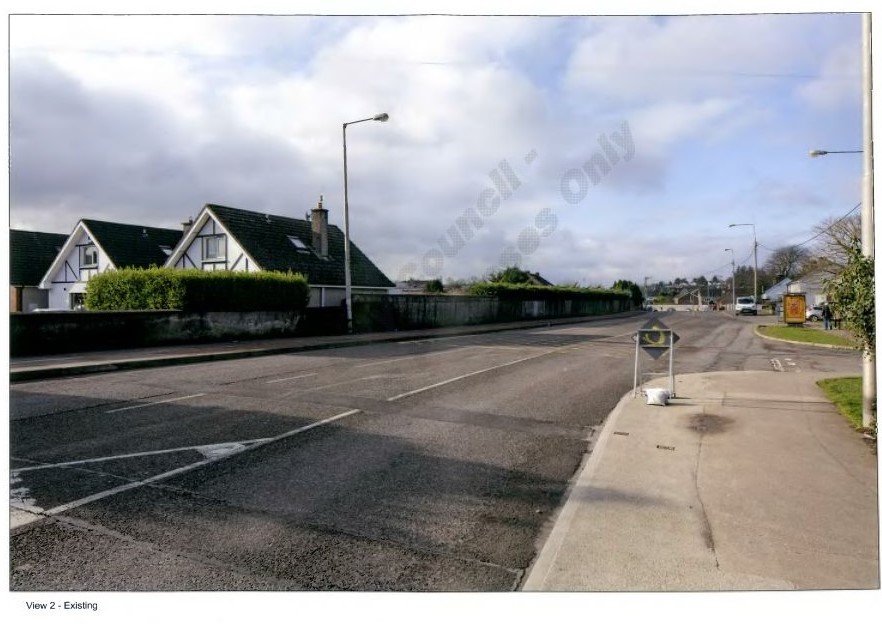
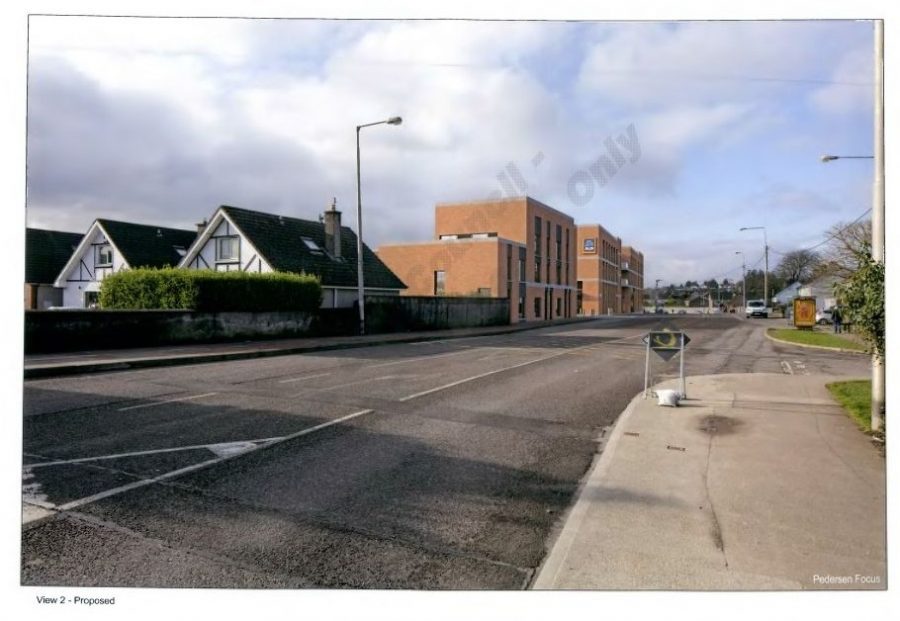
Kieran’s Our City, Our Town, 8 April 2021

Kieran’s Our City, Our Town Article,
Cork Independent, 8 April 2021
Journeys to a Truce: Dug Outs and Wire Tapping
Seán Healy was Captain of A-Company of the 1st Battalion of Cork IRA Brigade No. 1 Cork and worked in the Parcels Office at Glanmire Road station (now Kent Station). In his Bureau of Military History account (WS1643) he describes in detail the creation of an arms dump in Glanmire and other reconnaissance work.
In Spring 1921 after exploring various places, A-Company decided on a site located in Knocknahorgan Woods, Glanmire. They approached the owner of the land whom they knew to be a staunch supporter of the IRA movement. He readily gave them permission to use his place and assured them the necessary assistance that he could provide in the nature of tools and digging equipment. The chosen place was about 300 yards from the public road and was strongly wooded. The site was also overgrown with briars and furze bushes, and there was a running stream of fresh water nearby.
After cautious reflection, A-Company decided to commandeer some railway sleepers and wagon covers from the Kilbarry Railway Yard, as they had no money to purchase these requirements. The Volunteers employed on the project, being mostly railway employees, were naturally a bit hesitant to interfere with their employer’s property. Sean notes: “If any of us were caught in the act of seizing the Railway Company’s property and the matter reported to the Company we would lose our employment and the Railway Company would, no doubt, have reported the ‘pilferage’ to the British Military authorities when we would suffer court martial at the hands of these people with a probable sentence of a long number of years of imprisonment”.
A-Company proceeded to Kilbarry, after making arrangements with Mr Duggan of Dublin Pike, to have a horse and cart in waiting near the railway yard. They commandeered about two dozen sleepers and three wagon covers without incident and then transported the material to Knocknahorgan.
Seán describes that it was not the company’s intention to use this dug-out as a permanent hide-out. It was to be used only for emergency purposes, on such occasions as when it would not be safe to sleep in the City, or when a big round-up was taking place. It was also to be used as an auxiliary arms dump. They already had an arms dump at The Fisheries on the Lower Road. The keeping of all their guns and ammunition in one place was unsafe.
As quite a number of A-Company men had now been deprived of their employment, there was no shortage of manual labour. Six men took part in the construction of the arms dump. The work had to be swiftly carried out, as the men had to reach their homes each night before the curfew hour approached.
The work of excavation was difficult as they had to dig into the ground to a depth of about eight feet. When completed, the dugout was about eight feet deep by ten feet wide and ten feet in length. They used the railway sleepers as side walls, placed one wagon sheet on top and another on the base, a third was used to lap over the mouth. To enter and leave, it was only necessary to raise the overlapping wagon cover, which was supported by a frame on the inside. The mouth was well camouflaged with overhanging branches. It took about a week to complete the job and, when it was finished, it was reasonably comfortable and dry and able to accommodate about six men. Candles were used for lighting.
Seán describes that A-Company often passed some hours in this arms dump structure where they censored captured British mails, cleaned and oiled guns, and played cards. It proved a haven of rest on nights when they had to sleep there. He describes: “The ventilation was good as we were fortunate in securing some broken drain pipes as ventilators. No noises from the Curfew lorries disturbed our slumbers; no tramp, tramp, of heavy boots of the marching hordes, and no list of names of the occupants, hung on the door by a landlord…It was a complete change to sleeping in a city house which had to conform to martial law regulations; but, of course, we always slept with one eye open, so to speak, with loaded guns within reach”.
Seán also provides insights into the tapping of telephone lines. Post Office linesman Tom Walsh ran a wire from a telegraph pole on Albert Street, which linked up the lines leading into the Black and Tan Headquarters Barracks at Empress Place on Summer Hill North. The pole was adjacent to the Metropole Laundry, and close to the stables of John Wallis Sons, in Railway Street, Cork.
The staff employed by Messrs Wallis Sons and the caretaker in the Laundry, were all helpful. In order to avoid the vigilance of crown enemy forces, A-Company could only operate after business hours or during weekends. The British authorities were well aware that the IRA had some staunch workers in the ranks of the post office staff, and therefore they were very cautious about sending important messages over the public telephone. A-Company worked at it in pairs, always armed and ready to fight if we were trapped, as there was no back-door for escape.
Seán outlines of the messages; “The service messages sent and received were usually of a routine nature. Calls for reinforcements to be sent to different police stations passed fairly frequently. Loyalists and others used the phone for the purpose of reporting suspicious movements of what appeared to be IRA men”.
Caption:
1094a. Glanmire Bridge, c.1910 from Kieran McCarthy and Dan’s Breen’s book, Cork Harbour Through Time.
Kieran’s Our City, Our Town, 1 April 2021
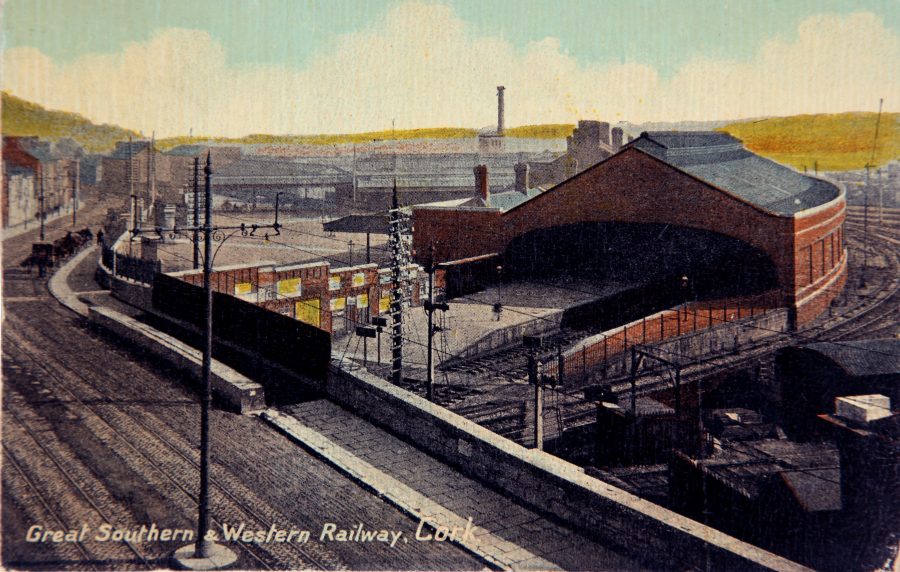
Kieran’s Our City, Our Town Article,
Cork Independent, 1 April 2021
Journeys to a Truce: Intelligence Work in Spring 1921
Documenting the activities of Cork IRA Brigade No.1 in the spring of 1921 is well covered in the witness statements in the Bureau of Military History. In Joseph Kelleher’s account (WS1675), he describes his time Captain of E Company of 1st Battalion, Cork IRA Brigade No.1. He carried out activities of a very varied nature against British crown forces in Cork.
In the spring of 1921 E Company’s made frequent raids on mails with postmen being held up and letters taken away for censoring. Anything found of interest to the IRA intelligence service was passed on to the battalion intelligence officer. Raids on railway premises for military stores were carried out. Petrol lorries were held up and large quantities of petrol captured. E Company brought the petrol by horse and car to Killeens on the Blarney Road where it was placed in a dump for use by the company and brigade. The dump also contained revolvers, rifles, bombs and explosive materials.
Another important dump was located on the premises of Messrs. Harrington, Goodlass, Wall Ltd, Paint, Oil and Chemical Merchants on Commons Road. This dump was created in 1918 and continued until 1923. It contained explosive materials (procured mainly on the premises) such as nitric acid, acetone, patent turpentine, yellow phosphorus, guncotton, manganese and other material used by the brigade for the manufacture of explosives.
On various occasions E Company waited in ambush for military and Black and Tan patrols. On one such occasion, Joseph recalls that about fifteen of them, armed with revolvers, rifles and grenades, remained all night on the alert in the house of Miss Peg Duggan (a prominent member of Cumann na mBan) at 49 Thomas Davis Street. They had received word from the brigade that a reprisal attack by crown forces was anticipated on the house of the late Tomás McCurtain, former Lord Mayor of Cork, and Brigadier of the Cork Brigade. Miss Duggan’s house was almost opposite that of the McCurtain house. The family of the latter still resided there. E Company waited all night for the coming of crown forces, but they failed to put in an appearance and they withdrew from Peg Duggan’s the following morning.
In May 1921, Joseph’s home was raided at night by British military and his brother John (also a member of E Company) were taken to Cork Military Barracks. After some time, there he was removed to Cork Gaol and from there to Spike Island.
Seán Healy, Captain of A Company of the 1st Battalion of Cork IRA Brigade No. 1 Cork (WS1643) worked in the Parcels Office at Glanmire Road station (now Kent Station). During the early weeks of the spring of 1921, Lieutenant Eamon O’Mahoney, who was then employed as a railway clerk in the Goods Depot at the station informed him that Seán’s name, as well as his own and the names of other members of the railway company’s staff, were included in one of the ‘murder’ lists of crown forces.
Seán felt that his accommodation on Alfred Street was too exposed and too easily kept under observationby Crown agents. This house could be watched from the Soldiers’ Home, which was situated on the opposite side of the street. He describes: “This house was originally opened as a place the British military forces could spend their hours of leisure, but it was now a rendezvous for all Crown agents. Spies and informers frequented the place at all this of the day and night. The front entrance was on the Lower Road and it had a rear entrance from Summerhill. An attack with bombs was made against it by the men of A Company a few months later, a couple of soldiers being seriously wounded and the premises badly damaged”.
Seán moved to an address on the Lower Road at the other end of the railway station. With the knowledge that the British Intelligence Officers were now aware that he was a prominent IRA officer, he had to take every precaution to see that he was not shadowed when going to or coming from work at the station, or when carrying out my duties as a fighting man.
Seán describes that sniping, decoy tactics, tapping telephone wires and subversive activities generally were regular features of A Company’s war efforts. They frequently received orders to carry out decoy operations such as the interruptions of communications and blocking of roads at places outside the city.These were usually night operations, which meant that they could not return to the city. On hiding out near Glanmire village Seán describes: “We would billet on some friendly household when convenient and when there was any serious danger of getting their friends into trouble we took shelter in outhouses or hay barns. There was a large house in Sarsfield Court where we hid. This house was vacant for a long time and was in a bad state of repair. A part of the upstairs floor collapsed one night, when I got a bad fall. I suffered injury to one knee which put me out of action for about a week”.
Caption:
1093a. Cork Dublin Railway Terminus (now Kent Station, Cork, c,1910 (source: Cork City Through Time by Kieran McCarthy & Dan Breen).
Kieran’s Our City, Our Town, 25 March 2021
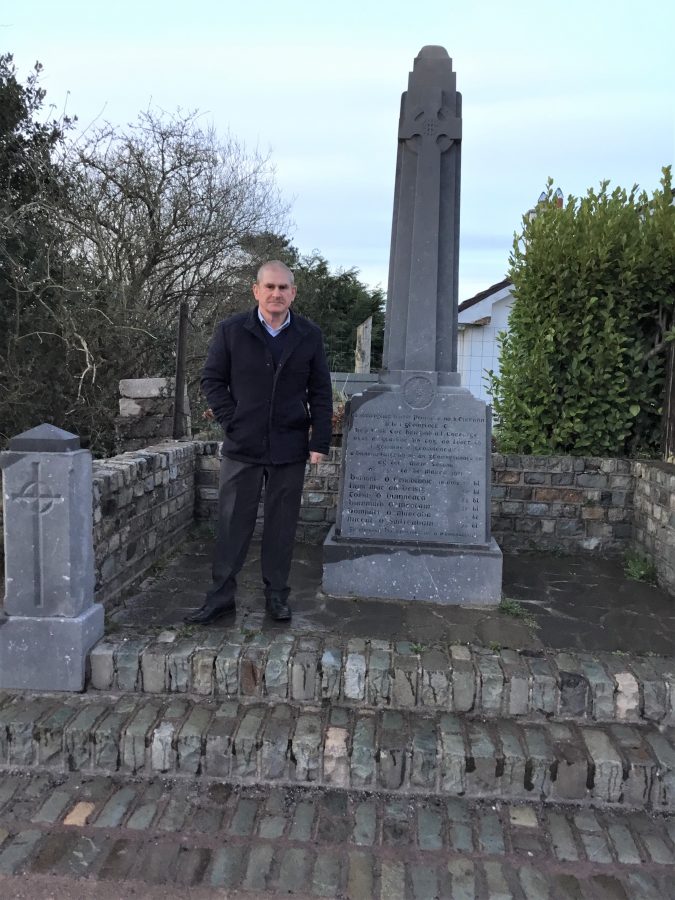
Kieran’s Our City, Our Town Article,
Cork Independent, 25 March 2021
Journeys to a Truce: The Ballycannon Boys
At Ballycannon, Kerrypike lies a memorial (erected in 1945) to the memory of six young IRA men that were killed near the spot on 23 March 1921. Farmer Cornelius O’Keeffe was witness to the killing of the six men. His detailed affidavit appears in the appendix of the witness statement in the Bureau of Military History of Daniel Healy, C Company, 1st Battalion, Cork IRA Brigade No.1.
Aged 21, Cornelius O’Keeffe had a farm of 105 acres, which was situated on the northern side or the high road leading from Cork to Blarney and was approached by a laneway leading from main road. The farmhouse consisted of a kitchen, parlour and four bedrooms. There were also extensive out-offices, barns, and sheds for cattle, also stables. It was one of the safe houses for the IRA.
In his affidavit, Cornelius remembers that on the night of Tuesday, 22 March 1921 about 11.30pm on that night there was a knock at his door after they had all gone to bed. He asked, “Who is there?” and a voice replied, “There are a couple or us [volunteers] going to sleep down in the stables; give us a call at seven in the morning”. He said “alright” and went to sleep.
About 4am, there was a thundering knock at his door. He leapt out of bed and looked out through the window. He saw the police outside. Before he could say anything, they roared at him to open the door. Cornelius relates:
“Just as I rushed downstairs to open the door it was burst open by the police and they said to me “Why the bloody hell didn’t you open the door”? I explained that the delay was due to the lamp not 1ighting. They then asked me if I had any man in the house. I said there was no win there only myself. They asked me if there were any men in the out-house. I said, ‘I can’t tell but the doors are unlocked’. They ordered me back to bed and searched the buds and the other rooms in the house. They then went outside, and I heard then search the out-houses”.
Cornelius was looking out the window and suddenly saw all the police rush up to where the lads or volunteers were sleeping. He went to bed and ten minutes later the police came in and took him out into the yard. There they charged him with harbouring rebels, which he denied. They then took him about 100 yards away from the out-house and gave him in charge to a sergeant and constable of the Royal Irish Constabulary.
One of the Black and Tans present came up to where he was standing with the other policemen and told them that they could find no arms in the house. He was then asked him to tell them where the arms were, and he said he did not know. As they were speaking to him Cornelius heard one of the boys roaring as if he was being tortured;
“I then saw one of the boys being pushed across the field. It was still somewhat dark, and he was too far away to distinguish who it was. The Black and Tan then returned and said, ‘he is showing where the arms are’. They then carried the same boy over to the ditch and brought him back to the stables again. A few minutes after I heard a shot. Then at intervals there were two or three shots and then a volley of shots”.
Cornelius asked the policeman what the shooting was about, and he replied they were only blank cartridges. A report then came up from the other body of police that some of the lads had escaped and to watch out for them. The police with him then prepared to shoot in case anyone would attempt to escape. There were then volleys fired where the boys were.
Cornelius then knelt and said his prayers as he thought his turn would be next. The police near him began shouting to the others not to shoot in their direction for fear they would be shot themselves. Cornelius was sent up for then and taken down to where the boys were. There two lines of Black and Tans in front of the stables so that he could not see who was there. As he was being taken down the field where the shooting took place, he saw two of the boys stretched out, on the grass. He was then taken over the road and down to Kennedy’s public-house at the nearby crossroads.
“There were five police with me – three old RIC and two Black and Tans. After some conversation, in which they accused me of keeping arms on my premises which I denied, I was brought back to Flaherty’s gate and I then saw five bodies being removed from my farm. They were all covered up in blankets. These bodies were placed in a lorry. They then brought out the sixth of the boys who was then alive and as they were throwing him into the lorry he said “Oh, my leg”. There was a bandage around his forehead”. [The sixth volunteer was subsequently killed].
Cornelius was put into the third lorry. They drove him in by Healy’s Bridge and the Lee Road as far as Gale’s quarry. When they got there the first lorry in which the bodies were want on and I did not see it again. He was taken up to the Military Barracks where he was kept in the Detention Barracks until 17 April 1921, and then he was released without any charge being brought against him.
The six men killed were Daniel Crowley of Blarney Street (aged 22), William Deasy of Mount Desert, Blarney Road (aged 20 years), Thomas Dennehy of Blarney Street (aged 21 years), Daniel Murphy of Orrey Hill (aged 24 years), Jeremiah O’Mullane of Blarney Street (aged 23), and Michael O’Sullivan of Blarney Street (aged 20 years).
This week the local community group of Clogheen/ Kerry Pike Community Association will place a wreath at the monument in Kerry Pike. They have also ordered six benches, which will have plaques dedicated to the six young men who were murdered at the location.
My thanks to Jim O’Mahony of the Community Association for his help and insights.
Caption:
1092a. Pat O’Regan, Vice Chair of Clogheen/ Kerry Pike Community Association, with the Ballycannon Monument, March 2021 (picture: Jim O’Mahony).
Cllr McCarthy calls again for Our Lady of Lourdes Road Junction to be Re-Examined, 23 March 2020
Press Release:
Cllr Kieran McCarthy has again asked the Operations Directorate of Cork City Council to re-examine the road safety measures at the junction of Ballinlough Road and Bellair Estate. Cllr McCarthy highlights: “It’s a regular issue local people have raised with me. It’s also that time of the year when funding is allocated to complete outstanding roads projects. The corner of Old Lady of Lourdes National School is a blind corner and has many people crossing this dangerous stretch of road every day”.
In response to Cllr McCarthy’s motion, the Operations Directorate of Cork City Council noted that “earlier this year improved signage and line markings have been installed on the western arm of the junction on the one-way portion of the Ballinlough Road to increase visibility and awareness that this section is a one-way road”. Notwithstanding this, the Council have said the road junction will remain on the list of areas for assessment for a traffic management project or road safety improvement scheme. The assessment will also consider which additional measures may be appropriate and feasible to improve road safety in the vicinity of the area. Concluding the operations directorate have noted to Cllr McCarthy’s motion; “Currently there is no funding available for traffic management projects. Any works deemed appropriate can be added for consideration in the future roads programme and undertaken subject to selection by the Members and available resources”.
Cllr. McCarthy stated that improved signage was welcomed but he would like details on the actual timeline for this road safety improvement scheme at the Our Lady of Lourdes junction.
Cllr McCarthy: Marking MacCurtain’s murder 101 years on
20 March 2021, “Historian and Independent councillor Kieran McCarthy described the former Lord Mayor as a true ‘colossus in Cork history’. ‘His story is peppered with several aspects – amongst those that shine out are his love of his family, city, country, language, comradeship and hope – all mixed with pure tragedy’, ” Marking MacCurtain’s murder 101 years on, Marking MacCurtain’s murder 101 years on (echolive.ie)